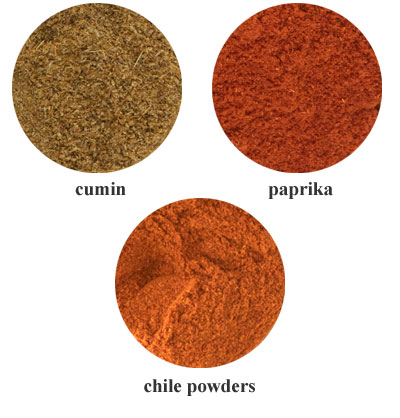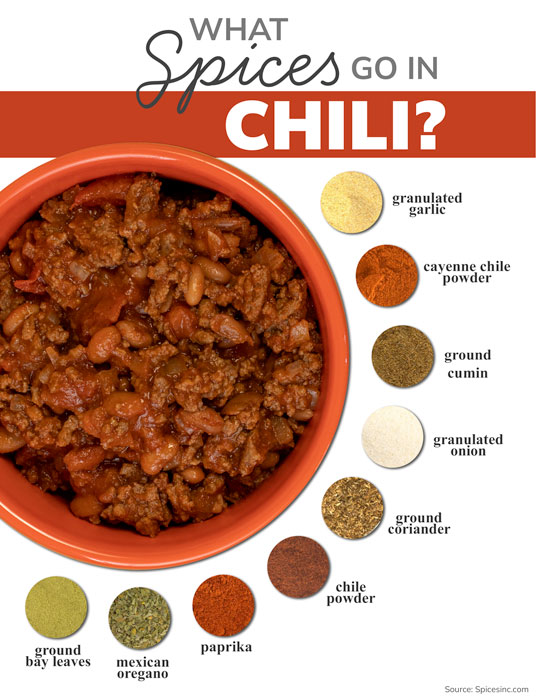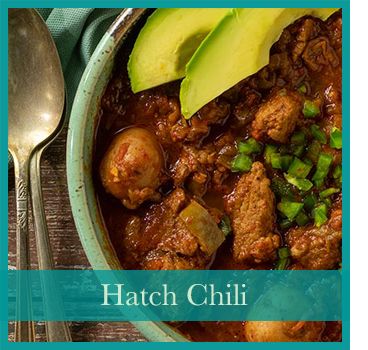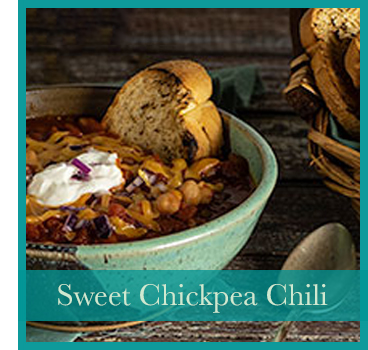What Are the Best Chili Spices

What Spices Go in Chili?
To make a great pot of chili, you need Cumin, Chile powders, and Paprika. There are a host of other spices and seasonings that you can use to make a personalized, unique pot of this beloved comfort-food classic, but Cumin, Chile powders, and Paprika are the Big Three.
Paprika are the Big Three.
Chili doesn’t have to be spicy-hot and bursting with chiles, even though it began as a spicy stew of meat and chiles popularized in San Antonio, Texas. There are many choices of dried chiles you can use in chili, which you can combine with a wide selection of meats and vegetables for a personal approach to chili.
Through the years, chili has come to reflect a myriad of tastes and preferences around the US; spiciness may have faded, but what has remained steady is chili’s hearty, warming nature and rich, deep flavors.
Our customers love chili, and for 15+ years, we’ve been answering their questions about how to make a great pot of chili. With the herbs and spices we’ve sourced from around the world, testing spices and recipes in our test kitchen until we know they work, and the feedback we’ve received from our long-standing customers, we’ve learned what’s good in chili, when to add certain ingredients to chili, and how to play with flavors to create your signature dish.
Chili is more than just meat and vegetables and some seasonings; it’s about personal style and a little flair. Make your next pot of chili memorable by making our herbs and spices work for you.
Most Common Chili Spices
Cumin, Chile Powders, and Paprika are the most common spices in chili followed by garlic, onion, coriander, Mexican oregano, and bay leaves. These ingredients can be combined to create a savory and well-balanced pot of top notch comfort food.
| Garlic and onion | these pungent aromatics create a bold base for chili to build upon |
| Coriander | putting Coriander in chili adds notes of citrus and a playful nuttiness |
| Mexican oregano | This herb—not related to Greek Oregano—has citrusy top notes and hints of licorice |
| Cayenne | Used mainly for its heat, Cayenne adds spicy warmth with plenty of staying power |
| Bay leaves | With notes of pine and camphor, Bay Leaves add cool, green lift to an otherwise deep and hearty dish |
 We haven’t mentioned salt and pepper yet, but we consider them essential ingredients in every dish you make. Salt helps tease out the deeper flavors and amplifies the taste of the entire dish. Black pepper adds a piney resonance and even a little bit of heat.
We haven’t mentioned salt and pepper yet, but we consider them essential ingredients in every dish you make. Salt helps tease out the deeper flavors and amplifies the taste of the entire dish. Black pepper adds a piney resonance and even a little bit of heat.
You can use salt at the beginning of your chili-making as you saute meat or vegetables, but you should use a relatively small amount of it to start. As the chili cooks, flavors will concentrate. Adding too much salt in the beginning, can result in an overly salty ending. In the final few minutes, right before you are ready to serve your meal, taste your chili and add more salt if necessary to bring out the flavors.
Add extra seasoning if you can’t use salt because of dietary concerns. To further enhance flavors, you could include an ingredient like Citric Acid, which can make the flavors pop.
Black pepper can be added at any time during cooking, either at the beginning or the end. Taste your chili just before it’s finished cooking, and add additional Black Pepper to your cooking pot if desired.
Cumin
Cumin has a shimmering warmth; it is earthy, nutty, and bitter, with hints of lemon to lift these deep characteristics. It is powerfully fragrant. When you put cumin in chili, it helps create a balanced palate. Its deep earthiness is brightened up by its lemony aspect.
By the 1860s, chili had become an American phenomenon; San Antonio’s Chili Queens brought their richly-seasoned meat and tomato broth to the people of Texas. This meshed perfectly with the established southwestern cuisines of the time. The American Southwest was already familiar with the pungent appeal of cumin and chiles because both of these crops had been grown and eaten in what is now New Mexico since the start of the 1600s1.
A staple spice in Tex-Mex cuisine, cumin can be found in everything from gooey queso dip to sizzling fajitas. It is much beloved by many fans of Tex-Mex food, but its bold and pungent flavor has a bitter edge. Some people just don’t like it, and if you’re not careful when you add it into your cooking, it’s easy to overdo. When you start working with cumin, add just a little at first, to see how you feel about its taste and impact. If you like it, add just a little bit more, and taste again.
If cumin is not for you, feel free to substitute in other spices instead. You can add some more paprika for that earthy flavor. Try some additional ground coriander, which is peppery and citrusy. Or choose a deeply-flavored chile powder to use instead, like raisiny Pasilla Negro Chile Powder or sweet and fruity New Mexico Chile Powder.
Paprika
Sweet, mild Paprika gives a cozy, approachable base to chili. With its mild spiciness and gentle appeal, Paprika provides the flavor foundation upon which a good chili is built. Its sweet, un-smoked version can be paired with just about any other spice or herb. It provides a seasoning blend with unassertive depth and roundness of flavor that is hard to replicate with any other spice.
Smoked Paprika can also be readily paired with other ingredients, but it has a decided smokiness that impacts the final flavor of chili. Put in half the amount of Smoked Paprika that you would use if you were cooking with Sweet Paprika. Then taste and adjust your seasonings. You can always add more Smoked Paprika if you’d like, but you can’t take it out once it’s in the pot, and you don’t want to over-smoke your dish.
Chile Powders
Chile powders are a terrific way to customize your chili. A chile powder, with an “e”, is the ground form of a single kind of chile pepper. A chile powder is a quick and easy way to impart the flavors of a chile into your dish without having to do the toasting and grinding yourself.
Powders can be smoky, spicy, and berry-like if they are ground from a Chipotle Morita, chocolatey and raisiny from an Ancho, or full of fire when you choose a Habanero powder. Use the powders that embody the flavor characteristics you like best, and mix and match until you find your favorite combination.
People will often use chili powder, with an “i”, for a quick and easy way to employ a combination of chile powders and other herbs and spices. They are convenient but pre-mixed, so you have to abide by the mix in the jar.
It's worth noting that when you work with powders, work carefully because the flavors of powders can be more assertive than those in a whole chile. Grinding creates a product that allows the volatile oils—the chemical compounds that give a chile its specific characteristics—to be positioned at the surface of the powder and readily accessible to your taste receptors.
Scale back at first until you understand the potency of your chile powder. For example, one Chipotle Morita chile, which may be 2 inches long and ½ inch wide, is the equivalent of ½ teaspoon of Chipotle Morita Powder.
How to Boost the Flavor of Chili
 To boost the flavor of chili, try thinking outside the box by adding some unexpected spices and herbs.
To boost the flavor of chili, try thinking outside the box by adding some unexpected spices and herbs.
• Cinnamon delivers a sweet aroma and a woodsy, peppery flavor. Crumbly, floral Ceylon cinnamon is the type of cinnamon traditionally found in Mexican foods, but we like the bold, spicy flavor of Cassia cinnamon for chili recipes. Add it early, so the flavor has time to mellow.
• Cacao Powder adds tremendous depth to chilis and is particularly effective in vegetarian chilis. This goes in early because it needs time to harmonize with the other ingredients in the pot. It can also add a chalky texture to the chili when added late.
• Achiote, or Ground Annatto, will give your chili a distinctly dark red color and a noticeably earthy flavor. This seasoning works very well with chile peppers, so add at the beginning of cooking time and allow Achiote and peppers to mingle in the pot.
• Ground Fenugreek is nutty and bittersweet. This can easily overpower a dish, so use it judiciously. It can be sauteed at the beginning but can also be used to add a bittersweet tang in the last twenty minutes of cooking.
• Sumac is tart; some have described it as akin to a vinegary flavor. This is an excellent complement to tomato-based chilis. Sumac needs time to process and can be almost dusty if it’s not given enough time to cook. Add early.
• Turmeric is woody with citrus, ginger, and floral undertones. Add early in the cooking time. It would be good with red chili, though it could put a whole new spin on a cream-based chili if used sparingly.
DIYing your Chili Seasoning
Packaged chili powders are a great shortcut to a seasoning that is balanced and ready to use, but you may want to define your style and create a simple chili seasoning that’s entirely your own.
your style and create a simple chili seasoning that’s entirely your own.
Here’s a simple, basic recipe that incorporates all the main ingredients mentioned above.
1 Tablespoon Sweet or Smoked Paprika
1 Tablespoon preferred Chile Powder
½ to 1 Tablespoon Ground Cumin, depending on taste preference
½ Tablespoon Granulated Garlic
1 teaspoon Granulated Onion
1 teaspoon Mexican Oregano
¾ teaspoon Cayenne Chile Powder
This will make a terrific pot of chili on its own, but it should be viewed as a guideline and not as a hard and fast rule. If you like more garlic, then add it! If you don’t have Mexican Oregano, use Greek Oregano and enjoy. Use your preferred Paprika, and add the Chile Powder with the flavor you like best.
If you want to play in the kitchen and create a new blend, you can incorporate the seasonings that will boost chile flavors into this mix.
For a rich chili with chocolate notes, use Ancho or Mulato Chile Powder, and add up to 1 Tablespoon of Cacao Powder.
For a playful, sweet chili, use Sweet Paprika, Guajillo Chile Powder, and up to 1 teaspoon of Ground Cinnamon.
For a chili with bold contrasts, try using Smoked Paprika, spicy New Mexico Lumbre Chile Powder, and tart Sumac.
The possible flavor combinations you can create when making a pot of chili are limited only by your imagination. Ask yourself what flavors you find appealing, and then taste, adjust, taste, adjust, and taste again. We recommend making notes about what you like for future chilis and moving on from what you don’t! Chili can enfold an enormous array of flavors in its thick, rich, fragrant, spice-friendly tomato base.
References
1. Maskevich, A. (2015, March 11). From ancient Sumeria to chipotle tacos, cumin has spiced up the world. NPR. Retrieved September 6, 2022.

